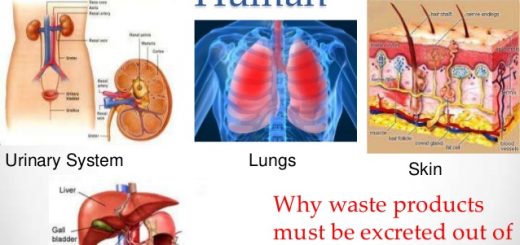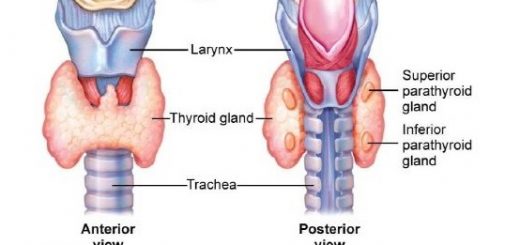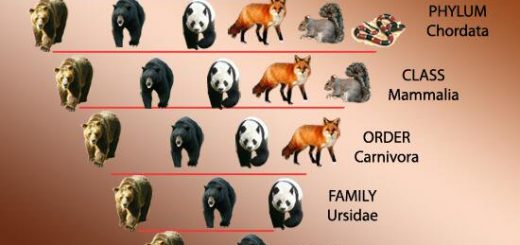Connective tissues structure, types, function, fibers and ground substances
Connective tissue is the most widely distributed of the primary tissues. It consists of cells, fibers & ground substances. the ground substance & fibers make up the extracellular matrix. Connective tissue is classified into two subtypes which are soft and specialized connective tissue. Connective tissue can bind & support, protect, insulate, store reserve fuel, and transport substances within the body.
Connective tissues
The connective tissue (CT) is found everywhere in the body, it is the most abundant and widely-distributed tissue by its several types.
Common characteristics of CT
- Common origin. all types of connective tissues arise from the mesenchyme (mesoderm).
- Variable degrees vascularly: some types of connective tissue have a rich supply of blood vessels, other is poorly-vascularized e.g. dense CT and cartilage are avascular.
- Several types of cells: they are widely-separated and immersed in an abundant intercellular substance (extracellular matrix) formed by these cells.
- Extracellular matrix: whereas all other tissues are composed mainly of cells, connective tissue Is formed of the abundant non-living extracellular matrix, which separates the living cells of the tissue.
Structural elements of connective tissue: it is made up of cells and an extracellular matrix which in turn has 2 elements the ground substance and the CT fibers, the properties of the cells, and the composition and arrangement of extracellular matrix elements vary greatly in different types of CT.
1- The connective tissue ground substance
It is the material that fills the spaces between the cells and contains the fibers, it is composed of:
a. Interstitial tissue fluid, formed of water and plasma proteins of low molecular weight that escape through the capillary wall as a result of the hydrostatic pressure. (Edema: is an increase in the quantity of the tissue fluid due to loss of the equilibrium between the tissue fluids entering and leaving the matrix of CT).
b. Adhesive glycoproteins e.g. fibronectin and laminin. They serve mainly as connective tissue glue that allows connective tissue cells to bind themselves to matrix elements.
c. Proteoglycans, consist of a protein core to which glycosaminoglycans (GAGs) are attached, The strand-like GAGs are large, negatively-charged polysaccharides that extend from the core protein like the fibers of a bottle brush, GAGs are like chondroitin sulfate and keratan sulfate.
The proteoglycans tend to form huge proteoglycan aggregates with hyaluronic acid that trap water, forming a substance that varies from a fluid to a viscous gel. The ground substance holds large amounts of fluid and functions as a medium through which nutrients and other dissolved substances can diffuse between the blood capillaries and the cells.
2- Connective tissue fibers
The fibers of connective tissue provide support. They are embedded in the connective tissue matrix, there are three types of CT fibers; collagen fibers, elastic fibers, and reticular fibers.
A. Collagen fibers
Characters:
- Collagen fibers are the most abundant CT fibers.
- They are the strongest and provide high tensile strength (that is the ability to resist longitudinal stress), stress test shows that collagen fibers are stronger than steel fibers of the same size.
- In a fresh state, collagen fibers have a glistening while appearance; they are therefore also called white fibers.
Histological features
- In the longitudinal section, collagen fibers appear as cylindrical structures that run in wavy bundles.
- The individual fibers do not branch while the bundles of fibers often do.
- They stain pink with H&E (eosinophilic), blue with Mallory’s stain, and green with Masson’s trichrome stain.
Synthesis of collagen
- Procollagen, a precursor of collagen protein is formed inside the fibroblasts then it is released by exocytosis into the extracellular space.
- Procollagen is cleaved to form collagen molecules that assemble spontaneously into collagen fibrils.
- Collagen fibrils in turn are further assembled into collagen fibers which may be bundled together into the thick collagen bundles.
Types of collagen: More than 20 different types of collagen fibers are known, they differ by their molecular composition, morphologic features, distribution in tissues, and functions.
The major types of collagen are:
- Type I collagen fibers in connective tissue proper, and in fibrocartilage and bone matrix.
- Type II collagen fibrils in the cartilage matrix (hyaline and elastic).
- Type Ill collagen fibers form the reticular fibers.
- Type lV in the basement membrane.
B. Reticular fibers
Characters: They consist mainly of type III collagen and form delicate networks that support the cells of the organs and surround small blood vessels.
Histological features:
- They are short, fine, and branching fibers forming a network.
- They are not stained by H&E preparation, they are stained brown to black by silver stain.
C. Elastic fibers
Characters: These fibers contain protein, elastin that allows them to stretch and recoil like rubber bands, because the fresh elastic fibers appear yellow, they are called the yellow fibers.
Histological features:
- Elastic fibers may exist in two different forms:
a. Individual long and thin fibers that branch in the extracellular matrix.
b. In the wall of large blood vessels, they form fenestrated parallel sheets. - They stain weakly with H&E.
- Special staining with orcein stain gives a brick-red color to elastic fibers while staining with V.VG stain gives them a dark violet color.
Connective tissue cells types, function & structure, Resident cells & Transient cells
Embryonic connective tissue, Connective tissue proper & Specialized connective tissue
Cell adhesion molecules, Cell junctions types, definition & function
Epithelial polarity, Apical, basal & lateral surfaces of epithelial cells
Tissues types, Epithelial tissue features, Covering & Glandular Epithelium
Supporting connective tissue, Cartilages function, structure, types & growth
Protein biosynthesis steps, site, importance, inhibitors & Protein maturation













